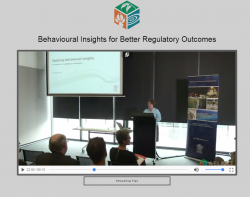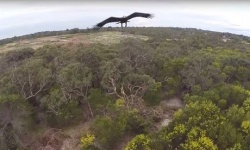
Search archive
Global Threat: Environmental Crime growing at an alarming pace
28/09/2016

The environment provides the very foundation of sustainable development, our well-being, food security and our economies. Ecosystems provide clean water supply, clean air and secure food and ultimately both physical and mental wellbeing. Natural resources also provide livelihoods, jobs and revenues to governments that can benefit education, health care, development and sustainable business models.
The world is being dredged of its natural resources, with much of what we rely on for our livelihoods at risk from a mounting threat: environmental crime.
The value of the black market industry behind crimes such as ivory smuggling, illegal logging and toxic waste dumping has jumped by 26% since 2014. According to a joint report recently published by the United Nation’s environment programme (UNEP) and Interpol environmental crime is threatening communities, significantly undermining economic growth potential and increasing security risks.
The two international organisations demand coordinated, international action to fight the phenomenon.
According to UNEP and Interpol, organised crime syndicates responsible for environmental crime operate like multinational corporations. They are well equipped, rely on solid information and operate in a manner that is both focused and flexible. They are said to be powerful and well-coordinated. They bribe, threaten, coerce, intimidate and kill.
Moreover, they are proficient in white-collar crime such as tax fraud, double counting, transfer mispricing and money laundering, internet crime (including hacking and phishing/identity theft), securities fraud and financial crime. They create shell companies, use tax havens and fraudulently claim carbon credits.
The growth rate of these crimes is astonishing. The report states that natural resources worth up to USD $ 258 billion are being illegally harvested and destroyed annually by timber mafias, wildlife poachers and traffickers, illegal miners and hazardous waste dumpers.
It is estimated, this new area of criminality, in just a few decades has diversified and skyrocketed to become the world’s fourth largest crime sector, behind drug trafficking, counterfeit crimes and human trafficking. That is a growth rate two to three times the pace of the global economy.
• Losses of government revenues through lost tax income due to criminal exploitation account for at least 9–26 billion USD annually.
• Forestry crimes including corporate crimes and illegal logging account for an estimated 51–152 billion USD;
• Illegal fisheries an estimated 11–24 billion USD,
• Illegal mining estimated at 12–48 billion USD;
• Waste at 10–12 billion USD.
The impact on the natural world has been devastating in some cases. More than a quarter of the world’s elephant population have been slaughtered for their tusks in the last decade alone.
Efforts to stem the global crime wave have been thwarted by weak laws, inadequate law enforcement, weak judicial systems, corruption and chronic underfunding.
The report argues that new laws are needed as well as centralised and coordinated efforts are needed both at national and international levels, the disruption of overseas tax havens and increased crime-fighting funds.
Interpol’s secretary general, Jürgen Stock, said: “Environmental crime is growing at an alarming pace. The complexity of this type of criminality requires a multi-sector response underpinned by collaboration across borders.”
UNEP’s director, Achim Steiner, said: “The vast sums of money generated from these crimes keep sophisticated international criminal gangs in business, and fuel insecurity around the world. The world needs to come together now to take strong national and international action to bring environmental crime to an end.”
The report recommends a global approach in coordination and intelligence sharing progressing towards more controlled operations. These can involve the use of tracking devices on smuggled cargo, satellite surveillance of the main shipping routes and analysis of commodity chain data to verify how illegally sourced products reach the market.
Additionally, more investment, support and capacity building is needed to help law enforcement who are increasingly being met by armed and violent offenders.
Violent conflicts terrorise societies and force millions of people to flee their homes. UNEP has recruited celebrities to raise awareness. The public must become aware of the links between environmental crime and international terrorism as that will foster a sense of urgency. So far, too many people, especially in rich western nations, do not understand that more is at stake than the poaching of elephants, rhinos and lions, for example. They need to know that environmental crime is a threat to security and peace.
That said, the conventional understanding of environmental crime is relevant too. Poaching and illegal logging are unacceptable – and so is the marketing of products that result from these practices around the world.
Ibrahim Thiaw, UNEP’s deputy director closed with: “Too often, criminals target poor communities that simply can’t afford to feed their families and bring them into the criminal chain. We need to snap this and create programmes that help people earn a living by protecting, conserving and sustaining the environment through either ecotourism or agriculture.”
Webinar: Behavioural Insights for Better Regulatory Regulation
27/09/2016

Last week, the Queensland Department of Environment and Heritage Protection hosted an AELERT Webinar: Behavioural Insights for Better Regulatory Regulation.
The presenters covered a lot of ground on nudge theory and its uses within government. They offered us some personal insight into behaviour modifiers and gave us some great case studies demonstrating results that can be achieved.
If you missed it, it is available for AELERT members to watch on the AELERT website.
Additionally the presenters have kindly supplied their presentations, these can be found here.
Helen Wooton also took the time to answer some questions that didn’t get covered during the presentation – download here.
To those that participated, to assist us in ensuring that we continue to deliver effective content to you, we ask that you participate in a short online survey about the event.
Your feedback is important.
APEC intensifies fight against environmental crime
14/09/2016

At the recent Asia-Pacific Economic Cooperation (APEC) Summit, held in Peru, the Anti-Corruption and Transparency Working Group issued a warning to the bloc that the alarming rise in environmental crime is threatening communities and significantly undermining growth potential across the Asia-Pacific.
The group focused on the need for urgent action to close governance loopholes enabling illegal logging, land development, mining and fishing. It comes amid the growth of illicit activities that are devastating vast areas of the Amazon and other biodiverse forest and marine hotspots in the region.
"Illegal extractive industries are growing which is a serious concern," acknowledged Pablo Sanchez, Attorney General of Peru and Chair of the APEC Anti-Corruption and Transparency Working Group.
"The complex, cross-border dynamics and consequences of natural resource exploitation are prompting greater cooperation in APEC to stem corruption that underpins it." he said.
"The expansion of the illegal economy illustrates the dark side of globalisation," added David Luna, a Senior Director, Anti-Crime Program at the United States Department of State and coordinator of APEC project work to tackle environmental crime.
"This scourge is severely affecting legal trade that livelihoods and environmental sustainability depend on."
APEC economies, home to around three billion people, are the world’s largest producers and consumers of land and marine resources—ranging from rosewood furniture to abalone, energy supplies and gold jewellery. Higher demand as income levels rise is powering illegal industries which collectively account for an estimated 8 to 15 percent of global GDP and make it difficult for legal operations to compete.
Additionally, these practices funnel tens of billions of dollars to organised crime annually and contribute to lost tax revenue and increased forced labour and sex trafficking.
Critically, they are also endangering much of the region’s rich wildlife and ecosystems.
The working group proposed bolstering technical support for licensing and procurement reform, supply chain tracking mechanisms, and improvements in investigative and enforcement capacity.
By strengthening ‘clean’ supply chains via anti-money laundering and mitigation of transfer pricing used by companies to dodge taxes is a further point of emphasis. Secure but fair import controls are also on the table.
"An industry practice that is legal in one economy may be seen as illegal in another economy," said Dr. Ruth Turia, Chair of the APEC Experts Group on Illegal Logging and Associated Trade, and Director of Policy and Planning at Papua New Guinea’s Forest Authority.
"Initiatives like the newly agreed timber legality guidance template in APEC will help to harmonise governance conditions in the region," Dr. Turia continued.
"Building more equitable relationships between stakeholders, public accountability and collaborative policy decision-making constitute the next step towards solving the industry’s integrity challenges," she stated.
Drones In Use
13/09/2016

Drones are a hot topic this month, with the South Australian government limiting their use in National Parks to reduce disruption to local wildlife, and the Victorian Government utilising the new technology to monitor planned burn offs and to survey the local koala population.
The new National Parks and Wildlife Regulations (National Parks) 2016, which came into effect on 1 September, clarifies that it is an expiable offence to fly remotely-piloted aircraft such as drones in South Australia’s national parks and reserves without a permit.
Department of Environment, Water and Natural Resources Director of Regional Programs, Grant Pelton said there had been an increase in the use of drones in parks in the past year or so.
"The increase in drone use is a result of changing technology, affordability of the devices and the desire to film and photograph native fauna in their natural environment.” Mr Pelton said.
“This presents a potential nuisance because they impact on the privacy and enjoyment of visitors, but they can also pose a very real hazard to native fauna.”
"We have even had reports of drones disturbing nesting birds such as ospreys, which are a threatened species. If these birds are disturbed, they may not return to their nests, resulting in the death of their chicks."
The fine for operating a drone in a national park without a permit is $75, plus a $60 Victims of Crime Levy.
The Victorian Government has concluded a successful 12 week trial regarding the usefulness of drones for service in land and environmental management. Tasked with operations to test their suitability the Department of Environment Land Water and Planning (DELWP) had the opportunity to investigate the capabilities of the aircraft in a variety of scenarios.
Recently, the drones have been surveying koala populations at a number of sites in the Barwon South West region, with the aim of collecting data on population size, monitoring planned burns locations and assisting with the broader identification of hazardous trees that pose a safety risk.
The technology uses remotely sensed data, similar to that of a satellite, to source video and thermal imagery. A range of sensors have been used in support of DELWP’s land and fire management responsibilities.
Minister for Energy, Environment and Climate Change, Lily D’Ambrosio said it is an innovative response to be able to actively monitor a situation as its happening in previously difficult to reach areas.
“With this technology, we can provide vital information to our firefighters and significantly improve our ability to survey areas that were previously inaccessible.” she said.
“We are taking an innovative ‘digital first’ approach and will use drones to help us better deliver effective environmental management for Victorians.”

